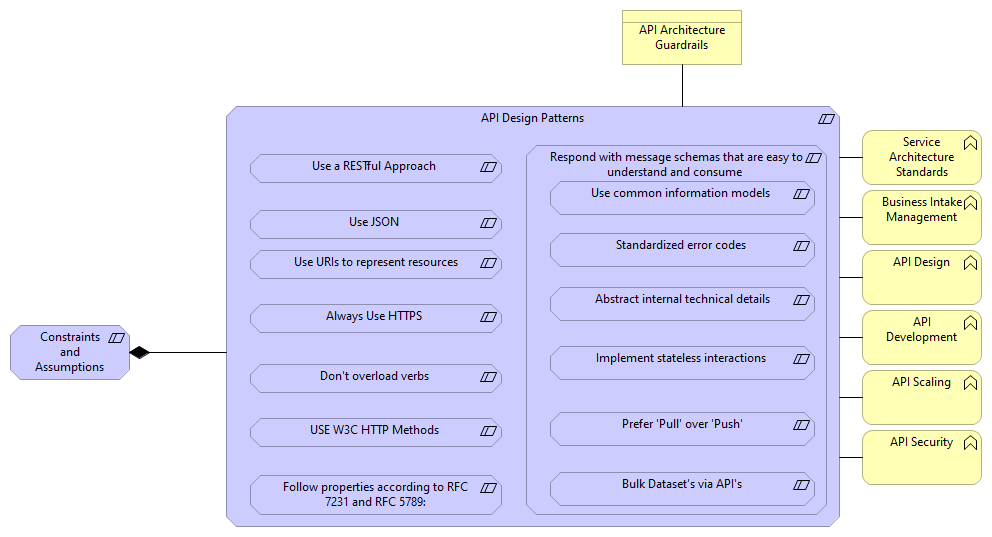| |
|
API Design Patterns |
Use URIs to represent resources |
| |
|
API Design Patterns |
Always Use HTTPS |
| |
|
API Design Patterns |
Use a RESTful Approach |
| |
|
API Design Patterns |
Respond with message schemas that are easy to understand and consume |
| |
|
API Design Patterns |
USE W3C HTTP Methods |
| |
|
API Design Patterns |
Don't overload verbs |
| |
|
API Design Patterns |
Use JSON |
| |
|
API Design Patterns |
Follow properties according to RFC 7231 and RFC 5789: |
| |
|
Respond with message schemas that are easy to understand and consume |
Implement stateless interactions |
| |
|
Respond with message schemas that are easy to understand and consume |
Use common information models |
| |
|
Respond with message schemas that are easy to understand and consume |
Abstract internal technical details |
| |
|
Respond with message schemas that are easy to understand and consume |
Prefer 'Pull' over 'Push' |
| |
|
Respond with message schemas that are easy to understand and consume |
Bulk Dataset's via API's |
| |
|
Respond with message schemas that are easy to understand and consume |
Standardized error codes |
| |
|
Constraints and Assumptions |
API Design Patterns |
| |
|
API Architecture Guardrails |
API Design Patterns |
| |
|
Service Architecture Standards |
API Design Patterns |
| |
|
Business Intake Management |
API Design Patterns |
| |
|
API Design |
API Design Patterns |
| |
|
API Development |
API Design Patterns |
| |
|
API Security |
API Design Patterns |
| |
|
API Scaling |
API Design Patterns |

